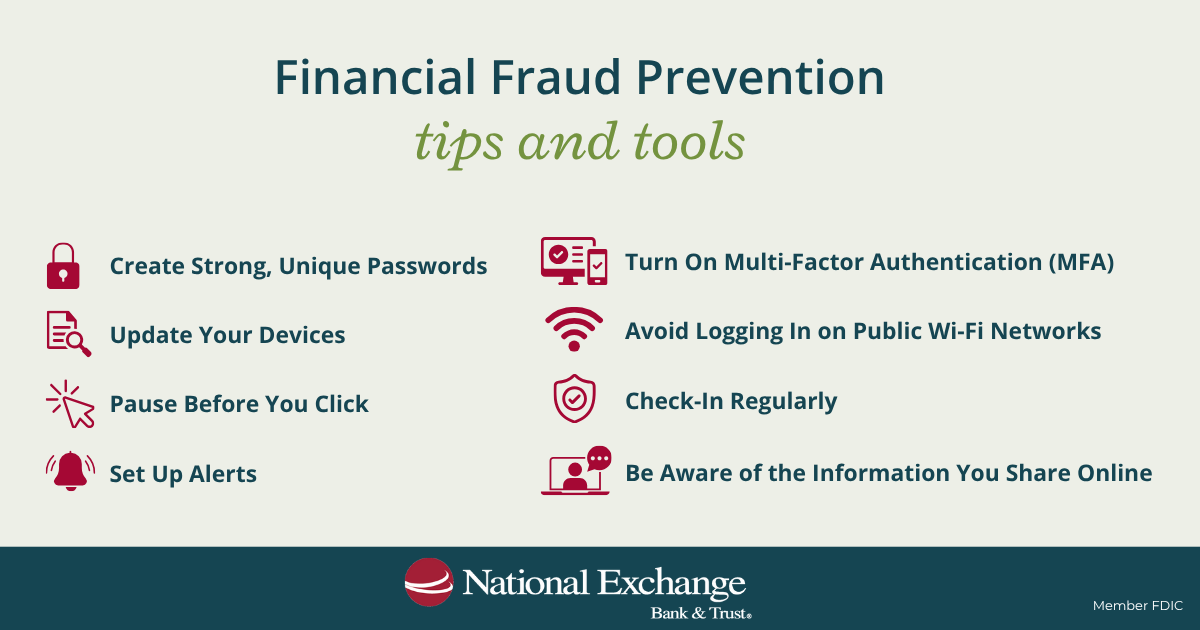FAQ’s
Fraudsters can obtain access to personal or financial information via phishing emails, counterfeit websites, phone calls or texts that impersonate your bank, or even someone guessing your password. Once they gain access to the sensitive information needed, they may try to transfer money, make purchases or steal your identity.
When you sign up for direct deposit, you’re only allowing money to be deposited into your account. The information you provide cannot be used by the payor to withdraw funds.
The Social Security Administration (SSA) highlights four key signs to help you spot a scam, known as the “Four Ps”: Pretend, Problem, Pressure, and Pay. Scammers often pretend to be from a trusted organization to gain your confidence. They create a problem, such as claiming there’s an issue with your account. Then, they apply pressure, urging you to act quickly before you have time to verify the information. Finally, they demand payment, often through unusual methods like gift cards, wire transfers, or cryptocurrency.
Some of the most common types of financial fraud and scams include blackmail scams, charity scams, debt collection or relief schemes, foreclosure relief scams, lottery or prize scams, mortgage closing scams and romance scams.
Scammers use many different methods to try to take your money including wire transfers, money transfers, peer-to-peer (P2P) and mobile payment apps, gift cards and cryptocurrency.




